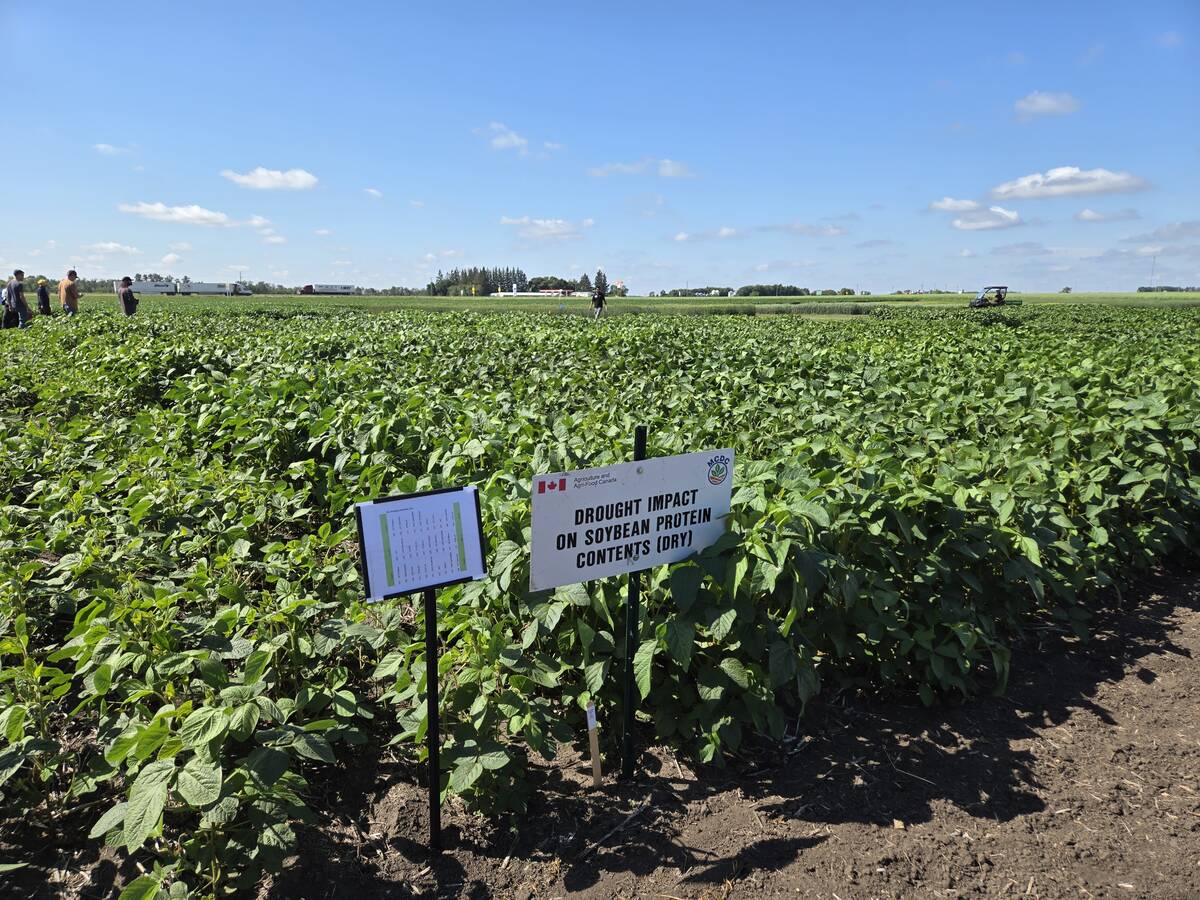On Oct. 9, just before the Thanksgiving weekend, Dwayne Anderson of Fosston, Sask., had 1,600 acres of swathed canola and oats waiting to be combined.
Three weeks later, they’re still waiting.
“It doesn’t quit raining. We can’t put it through the combine,” Anderson said just before
Halloween.
“It really hasn’t been fit to combine… you can just barely thrash it.”
Of his 1,400 canola acres, Anderson has been able to harvest only 250 acres since Thanks-giving because of a seemingly endless stretch of cool, wet weather.
Read Also

Carberry field day looks for agriculture solutions
Manitoba farmers explored research solutions for resilient crops, perpetual agronomic issues and new kinds of agricultural products at a field day at the Manitoba Crop Diversification Centre in Carberry on Aug. 6.
And last week he was again stuck in his house, because more rain fell on his farm west of
Kelvington, Sask.
“We’re at just over four and a half inches in October,” Anderson said, adding the problem hasn’t been the amount but the frequency of rain and snow.
“It just keeps coming. A couple tenths. A couple tenths. It’s very frustrating.”
Although it’s minimal comfort, Anderson isn’t the only producer in Western Canada struggling to get the crop in the bin this fall.
More to go
The Saskatchewan Agriculture crop report for Oct. 26 said only 79 percent of the crop was harvested across the province.
Nearly 40 percent of oats, more than 30 percent of canola, 22 percent of spring wheat and 14 percent of barley remained in Saskatchewan fields.
According to the report, the northwest region had the most left to harvest. In that area, only 61 percent of the crop had been combined.
“It’s the northeast and the northwest portions of the province that are (the most affected),” said Grant McLean, crop specialist with Saskatchewan
Agriculture.
“And to a lesser degree … the east and west central areas still have a fair amount of crop.”
An estimated 68 percent is harvested in northeastern Saskatchewan, 71 percent in east central and 81 percent in the west central region.
In Alberta, almost all cereals have been combined but a sizable chunk of canola remains in the field, said Mark Cutts, a crop specialist with Alberta Agriculture.
Cutts estimated that 15 to 20 percent of the province’s canola crop is not harvested and percentages are likely higher in central Alberta.
“Red Deer north up into that St. Paul area, and then west of Highway 2… there is quite a bit of canola out that way,” he said, adding that October was essentially a harvest write-off across Alberta due to wet weather.
“After Oct. 2, I don’t think there was much harvesting done until the weekend of the 24th and 25th.”
In Manitoba, the story is similar on Myron Pedersen’s farm near Carman. As of last week Pedersen had combined only 50 percent of his soybeans.
“Definitely, this is the worst conditions we’ve harvested soybeans on our farm in the 10 years of growing,” said Pedersen, who still had 300 acres of beans and 600 acres of corn to harvest.
The Manitoba agriculture department didn’t have a current estimate of what remains in the field province-wide, but a spokesperson said harvest progress is definitely behind normal.
“Obviously there are a number of crops that are still out there… and of course here in Manitoba we have a lot of the long seeded crops out as well. Your corn, your sunflowers and your soybeans,” said cereals specialist Pam de Rocquigny.
This is the first year that Pedersen has been forced to use a dryer on his soybeans because they are coming off the combine at 18 percent moisture, significantly higher than the ideal moisture content of 13 percent.
Anderson was also forced to dry the 250 acres of canola that he combined in October.
“The canola we’ve taken off we can’t test. It’s that tough. We just dry for as long as it takes to bring it down,” said Anderson, adding that grain dryers are at a premium in the region.
A neighbour put his old grain dryer in the paper and had more than 100 inquiries about it, Anderson said.
Looking ahead, Anderson said November weather will determine whether he gets his crop off.
If it remains cool and wet and his crop sits in the field over winter, it would be a first on his farm.
“I’ve never harvested canola in the spring.”















